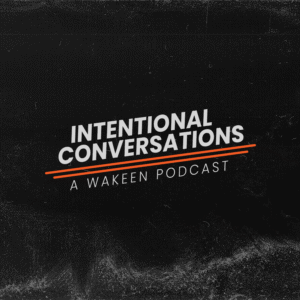In this Blog:
- Use Research to pinpoint audiences and markets
- BONUS: Three free research tools
- Message to different customers in different ways
- Approach your plan with fresh eyes and look for ways to optimize
- Run regular reporting (and look at it)
Dear Marketing Professional, does your status quo marketing plan leave you feeling in a rut about how to shake things up for your organization, generate new leads, or just generally create a unique buzz around your brand? Fear not, you aren’t alone! Many businesses are challenged with the same issues, so we have identified four ways you can keep your marketing strategy relevant and effective.
Use research to pinpoint audiences and markets
Unfortunately, all too often businesses take on marketing without a plan. Sometimes it’s due to limited resources or expertise, but far too often this rush to action results in spending time and money in inefficient ways. Do some research on your target markets, ideal customers, and peak purchasing timeframes. Then use this data to build a (realistic) plan with performance benchmarks to help keep you on track. While you may need to invest in market research, here are three free resources that can point you in the right direction: 1) US Census – access socio-economic and household data at the city, state, and county level; 2) Chamber of Commerce – most local chambers have information and/or look-up tools related to business and industry in your region; and 3) Niche – find qualitative information about schools, neighborhoods and community access. Use overarching community data with your internal reporting via social media, Google Analytics, and customer information to create current and potential audience personas and prioritize geographic areas of opportunity.
Message to different customers in different ways
Chances are, you offer more than one product or service, and these aren’t intended for the exact same customer. Then why are you trying to use the same tactics and messaging to engage everyone in the same way? Precision in marketing is really important, but most businesses don’t have the luxury of bottomless budgets to test media tactics or endless time for organic outreach. The benefit of today’s marketing world is that you don’t have to – digital audience targeting platforms provide a wealth of opportunities to direct your messages to unique audiences with curated content. Likewise, traditional media outlets have come a long way in advanced data and targeting. Using a combination of broad-reach tactics (like outdoor or television) coupled with highly-targeted, segmented platforms (such as email or programmatic digital) is one way to maintain brand presence while speaking to specific customer groups. This may require a unique message by channel but look for ways to use the same content and customize it or post it in various places. Take this article for example . . . you may have connected with this content as a blog on our website, in our eNewsletter, a social media post, a Google search, or even in video.
Approach your plan with fresh eyes and look for ways to optimize
Are you guilty of the phrase “Let’s do the same thing as last year?” Yep, we all are. The fact is, once you’ve figured out a good solution, it’s easy to go back to the same thing time and again. This isn’t to say that you should abandon the tactics you have used in the past, but it does mean that you should continually evaluate them and consider a new approach. If an “old standby” isn’t producing anymore, then don’t be afraid to replace it. On the flip side, if a particular approach is working, then proactively look for ways to enhance it or give it a different spin. Ask your media partners for specifics about what trends they are seeing. Request year-over-year comparisons in viewership, engagement, and/or impressions. Understand new technologies, programs, and/or targeting capabilities. Poll your customers on how/where they heard about you. You likely shouldn’t jump on every trend or make wholesale changes to your plan, but you should continue to stay relevant and take advantage of new opportunities. This goes for messaging too – evaluate how you are communicating services and products – it may be time to update your language or graphics.
Run regular reporting (and look at it)
Ahhhh, you finally laid out the marketing plan and hit the launch button! But wait, how do you know if it’s working? Have you outlined specific KPIs to measure success and is someone tasked with checking progress, making optimizations, and tracking engagement toward conversions or goals? Marketing doesn’t operate in a vacuum, and it isn’t a perfect science. Too often businesses get caught up in “last-click attribution,” meaning that they only assign success to whatever the last touchpoint was that generated action from the customer. The reality is that marketing is a complex matrix, and requires attention to how all the moving parts work in unison. Make sure you devote time to collect and review reporting. This may include Google Analytics, lead generation reports, sales data, and/or reports from paid media channels. If necessary, lean into expertise from a team member or trusted partner to ensure you understand the data. In most cases, you will need to gather 60 – 90 days’ worth of information before pivoting but being disciplined to review and track data over time will allow you to make minor adjustments that could have a huge impact.
With a little intentionality, a plan of action, and a regular review of reporting you can position your business for growth and success versus getting caught in a marketing rut!





